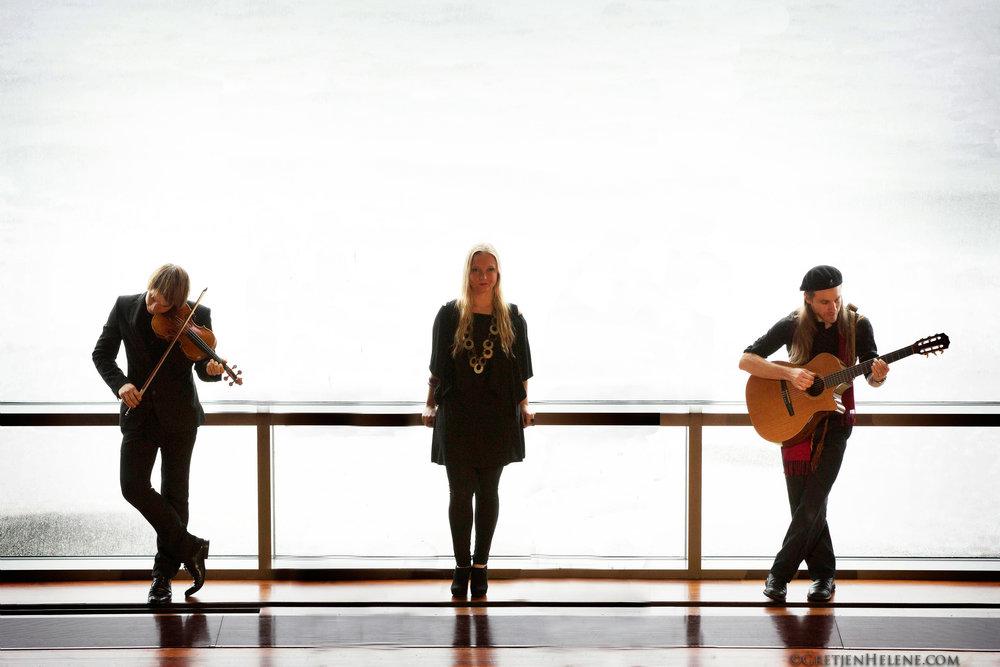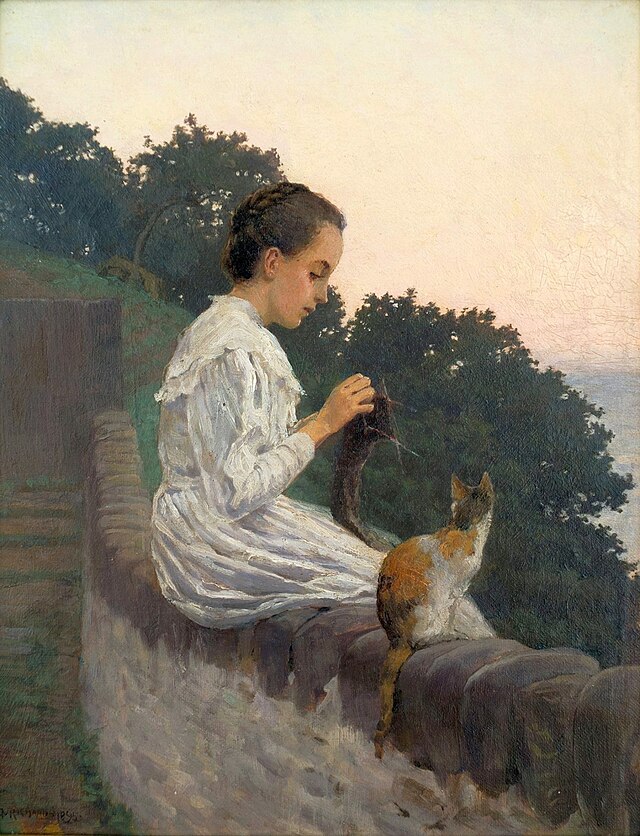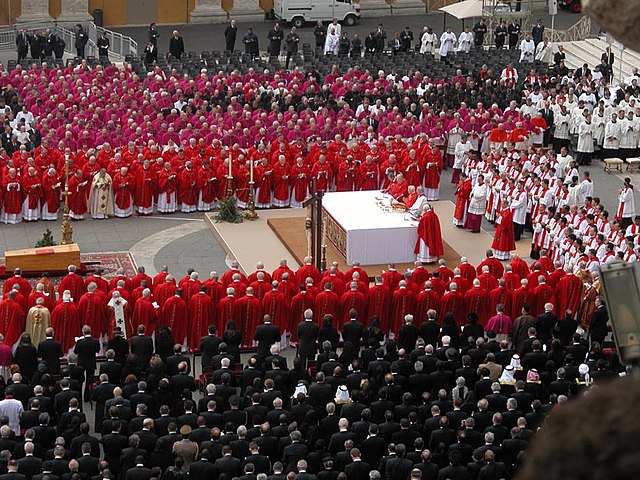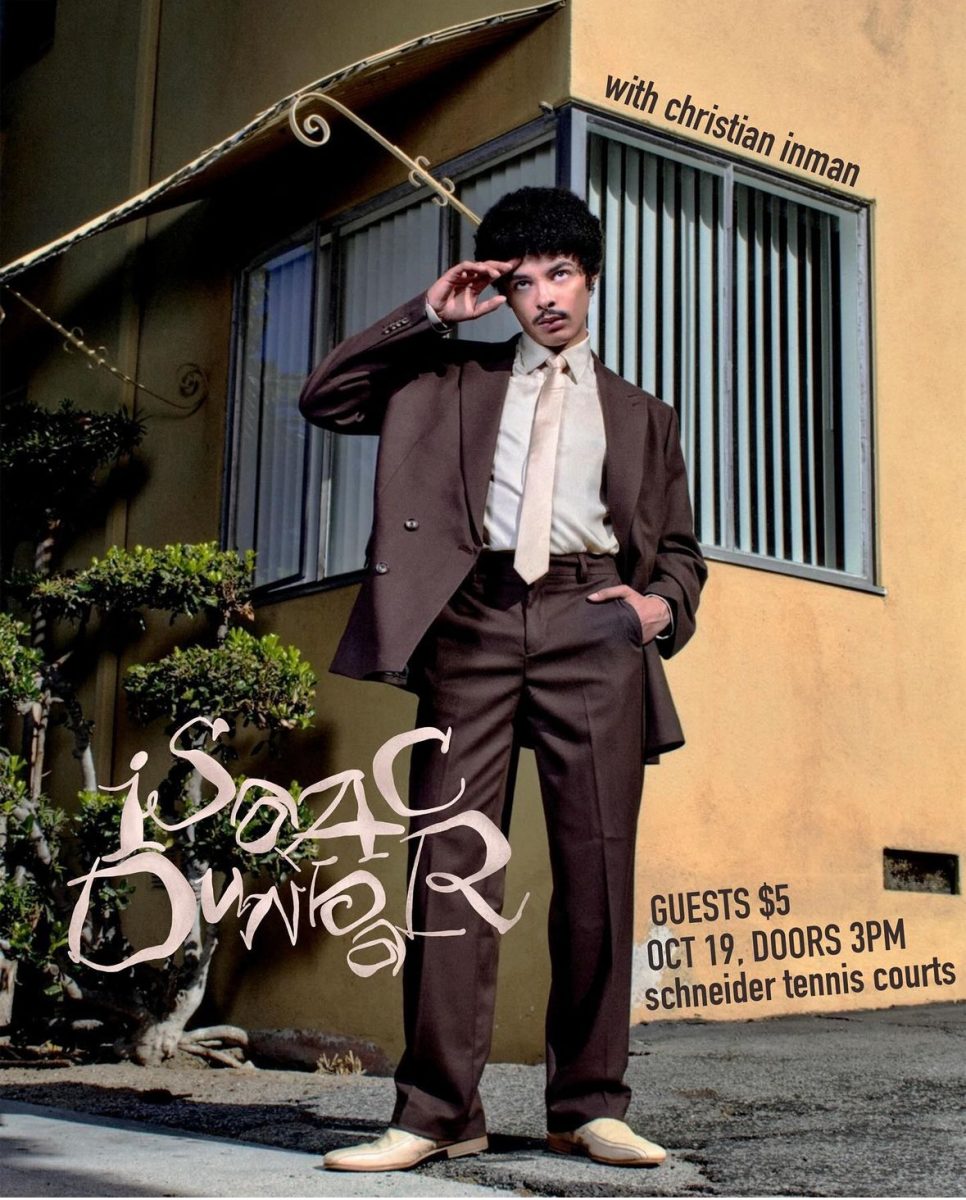On November 29 at 7 p.m., the Guy Mendilow Ensemble will perform their show, “The Forgotten Kingdom,” at Wellesley’s Houghton Chapel as part of their tour throughout the Northeast U.S. The ensemble aims to unite storytelling with music and to bring their audiences closer to the experiences of overlooked Sephardic communities at the close of the Ottoman Empire. The ensemble also aspires to connect with their audience’s present-day lives.
“If this project were only about recognizing overlooked histories and overlooked cultures.. .that in itself would be enough,” said Mendilow, the group’s director. “The fact that this history also touches our own story, and has so much light to shed on current dilemmas and perspectives and struggles, is one of the reasons I’ve been coming back to it.”
Mendilow sings and plays the guitar and berimbau. The other members of the ensemble performing at Wellesley include vocalist Sofia Tosello and violinist Chris Baum.
Mendilow has been working on “The Forgotten Kingdom” for the past seven years. The show features songs from Sephardic, or Judeo-Spanish Ladino communities in the Mediterranean and Balkan regions at the turn of the 20th century. Many of these communities, as well as the Ladino language, are disappearing from cultural memory. Though these are Jewish communities, Mendilow says the music “has nothing to do whatsoever with any religion.”
Before the performance, the ensemble will present a lecture called “Myths, Lies and Truths: Romanticizing Traditional Cultures” at 12:45 p.m. in the Multifaith Center, where they will discuss the sand animation to accompany “Forgotten Kingdom” and present recordings sung by members of the original communities.
Originally from Jerusalem, Mendilow’s singing career took off at a young age. He was exposed to Ladino songs as a child and was captivated by the melodies, rhythms and lyrics.
“I come from a family in which stories and storytelling have always been very important. I love good stories, and if you’re looking for good stories, then Sephardic material is the place to be… if you want stories of kings and queens and armies and beheadings and all that good stuff,” he said.
Mendilow feels especially drawn to this particular time period in Ladino history because these communities were eyewitnesses to a major turning point in history: the first World War.
“To me what is so haunting is what it means to be the people caught in the middle: the people who get to see the old world and the new world,” said Mendilow.
Though the Ladino language itself traces back hundreds of years, the music in “The Forgotten Kingdom” isn’t that ancient.
“There a lot of myths about Ladino language; [for example], that these are songs that have been handed down from generation, from mother to daughter across 500 years, etcetera, etcetera. Unfortunately that’s not true, for the most part,” explained Mendilow. “There are in fact some songs that are part of [“The Forgotten Kingdom”] that do come from pre-expulsion Spain and that are over 500 years old. But that’s only for the lyrics.”
The music itself, Mendilow explained, is relatively new. In the context of the Ladino language, this means that it dates back to the late 1800s or early 1900s. It is virtually impossible to know exactly how these songs would have sounded back then. Mendilow began working on “The Forgotten Kingdom” in 2011, but he says it is far from finished, and since he began, he has gone back to write and rewrite the music numerous times.
“At a certain point in this research, you can go down a rabbit hole—that’s what happened to me, that’s why I’ve been working on this for so long,” said Mendilow.
As he works on a project, he researches the songs’ original contexts extensively and listens to field recordings of the original “culture-bearers,” or the people of the original communities. Most of the songs in “The Forgotten Kingdom” were sung by women at community events, such as weddings, or even in their own homes.
“These songs were never meant for the stage… sometimes they were sung in situations where men weren’t really allowed, like the bridegroom party. And so you get perspectives that are pretty raw sometimes,” said Mendilow.
But despite his devotion to contextual research, Mendilow does not simply replicate the songs as they would have been heard in the early 1900s. He explained that a “historically correct” performance would include the exact tone, mannerisms and instruments that would have been present in the time period. That isn’t the purpose of “The Forgotten Kingdom.”
“On the total other end of the spectrum is what you would call ‘artistic creation.’ It’s where you do something new with something that’s old. And you let go of the tradition, you let go of the historically accurate representation, in order to make the song live and breathe in your own way,” said Mendilow.
However, in the process of adding his own twist to these oral traditions, he must sacrifice certain aspects of the music.
“What I give up in the process [are] those cultural identity markers that would have made the song recognizable from Salónica in 1919. I replace them with my own baggage and with the ensemble’s baggage,” he said.
For example, as he was putting his ensemble together, Mendilow envisioned a specific sound for the vocals that would not have been historically accurate. He chose Tosello, an expert in Argentinian tango, because of her fiery voice.
“I looked for someone like Sofia, who was a native Spanish speaker, who had experience and expertise with these singing traditions from South America—so that we can tell those stories using those colors,” said Mendilow.
Additionally, as one of the recipients of the 2017 Live Arts Boston awards, the ensemble will have the opportunity to include animation to go along with their show. To do so, Mendilow is working with Kseniya Simonova, a sand artist and a winner of Ukraine’s Got Talent.
“Being able to tell this project through the visual medium as well, and with something as beautiful and symbolic as sand, is extremely meaningful,” said Mendilow.
By blending these creative additions with an existing oral tradition, the Guy Mendilow Ensemble calls on listeners to think not only about the past, but also about the ways in which the music resonates with their own lives.
“What this ensemble has in common in all our shows is this marriage of storytelling with music to whisk people away to places that are different from their current setting, so that they can look at their current setting in a new way…It’s a meditation on our own humanity and our own situation,” said Mendilow.







